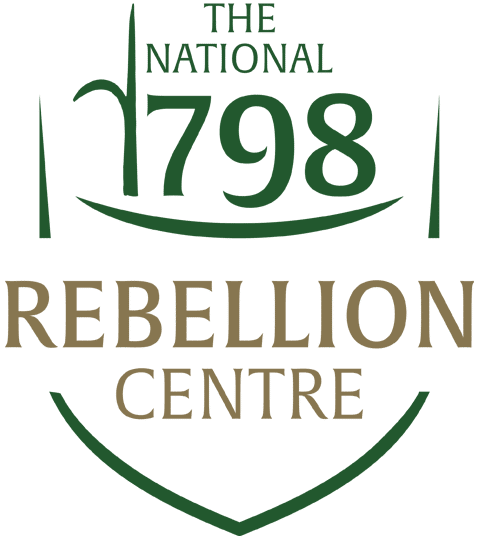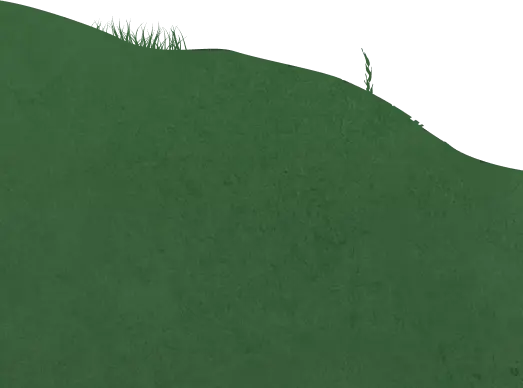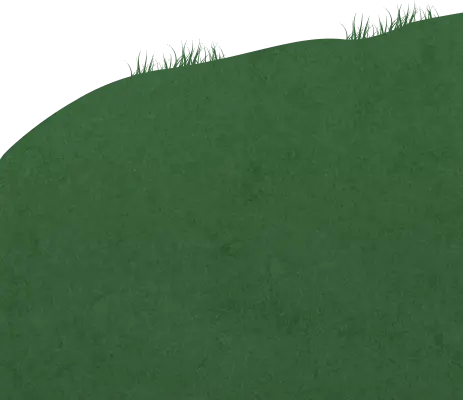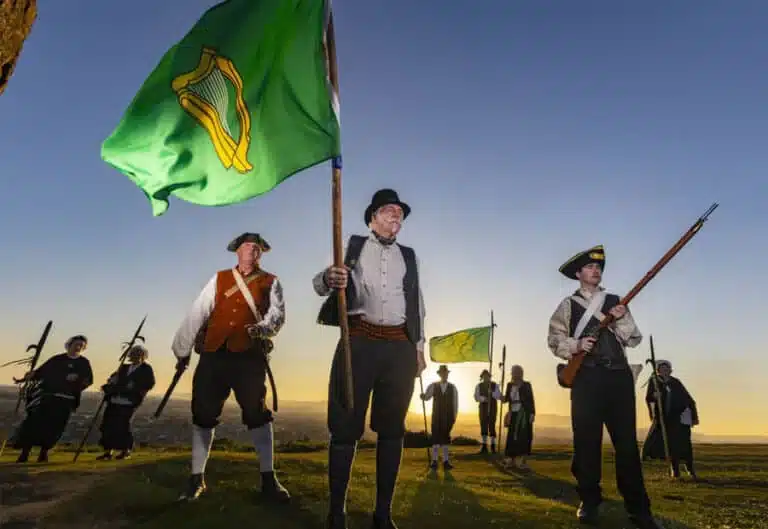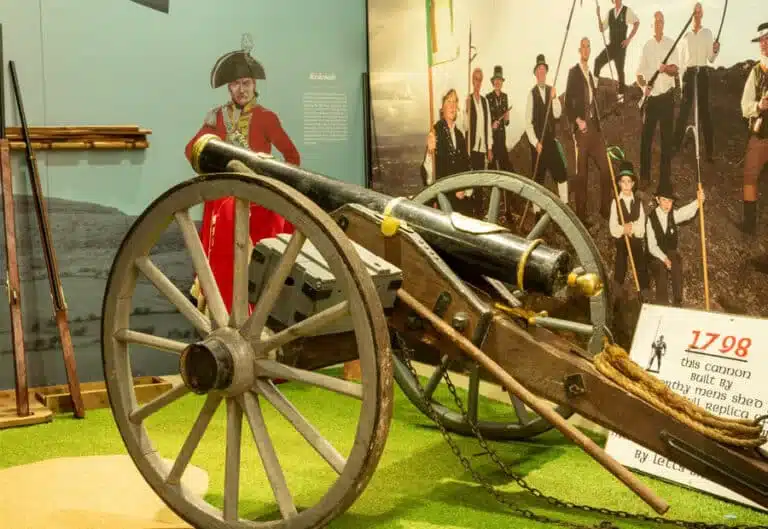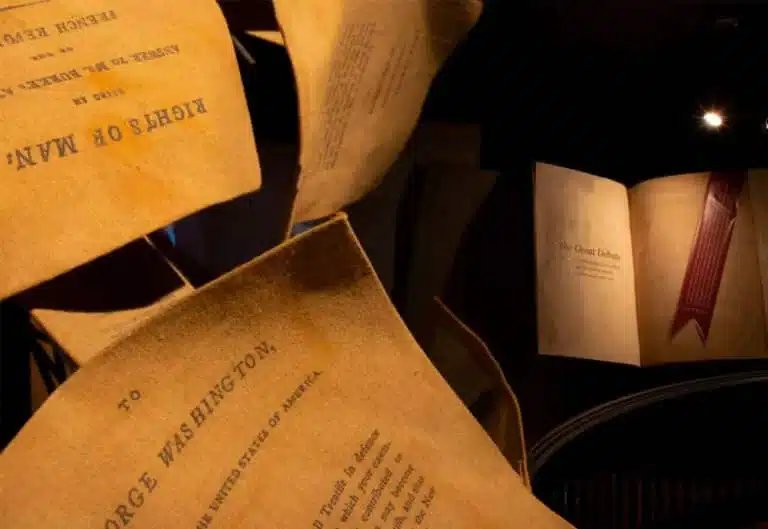

 Timeline of 1798
Timeline of 1798 
1798 was a year of unrest, bloody rebellion, guerrilla warfare, massacre and execution, inspired by the Republican spirit racing through Europe and the Americas.
1798
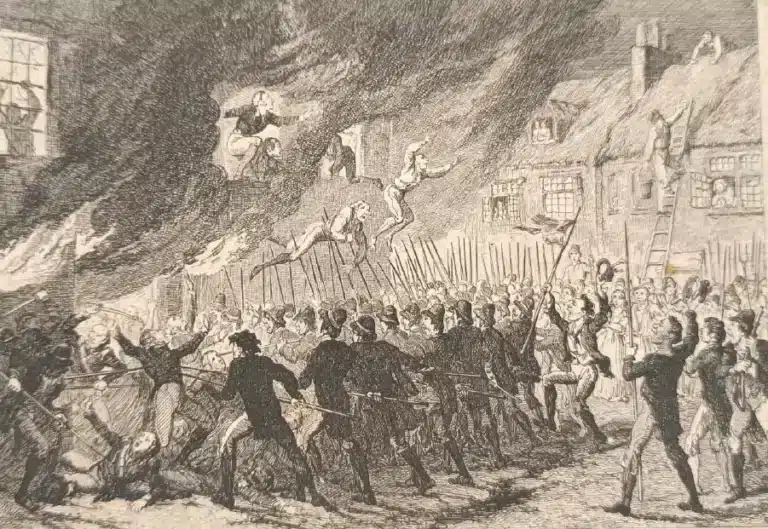
April 1798
In Dublin
In early 1798, United Irishmen delegates, Wolfe Tone and Edward Lewins were involved in negotiations with Napoleon Bonaparte. In the Spring of 1798, Bonaparte agreed to send an invading force to Ireland. However, Bonaparte later changed his plans and decided to send his troops on an expedition to Egypt instead. This resulted in the French expedition to Ireland being significantly delayed.
Disagreements arose amongst the leadership of the United Irishmen, regarding whether to wait for French aid to arrive or commence the rebellion by themselves.
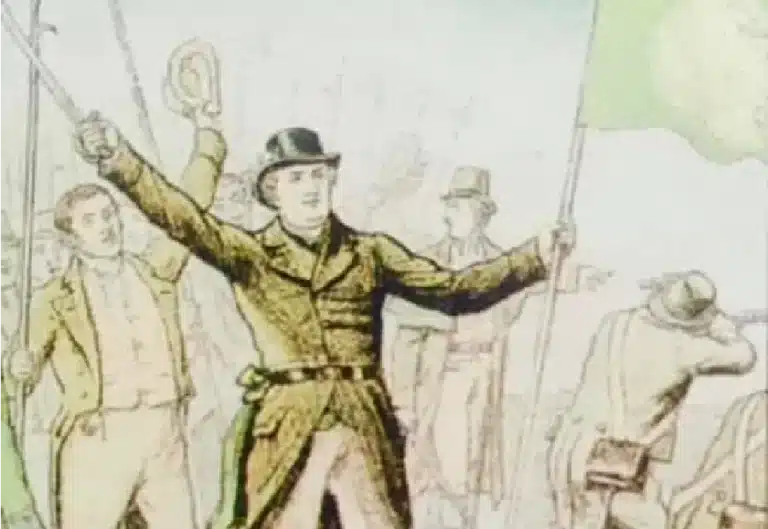
26 May 1798
Skirmish at the Harrow
By 26 May 1798, news of the Rebellion waging in Dublin, Meath and Kildare began to filter into Co. Wexford. Local Militia and Yeomanry units traversed the county arresting suspected United Irishmen and in doing so terrifying the local population. On this day, a group of men from the parish of Boolavogue were cutting turf for local Priest Fr. John Murphy, when a patrol of about twenty members of the Yeomen Cavalry from Camolin were seen approaching. The Cavalry led by Lieutenant Bookey, rode to a dwelling of a suspected United Irishman. Finding their target was not at home, they set fire to the cabin. When returning, the Cavalry was ambushed by Fr. Murphy and his men, which led to the deaths of Lieutenant Bookey and Private John Donovan.
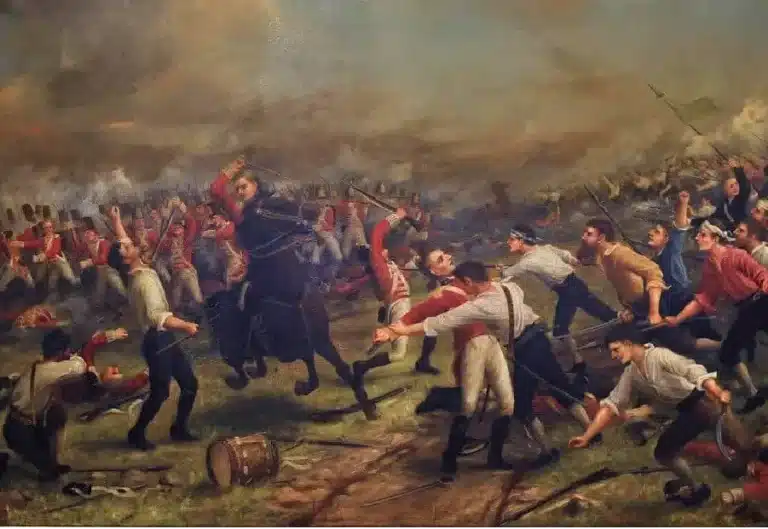
27 May 1798
The Battle of Oulart Hill
The skirmish at the Harrow ignited the Rebellion in County Wexford and in the hours that followed. Fr. John Murphy and his men were joined by hundreds of Rebels who had made their way towards Oulart Hill. Meanwhile, news of the skirmish at the Harrow had now reached the Crown Forces in Wexford town. On the morning of 27 May, the majority of its garrison, 110 North Cork Militia were ordered to crush the Rebellion. The Militia reached Oulart at 2 pm and immediately began to advance upon the 2,000 rebels on Oulart Hill. Upon firing a number of unsuccessful volleys which failed to break the rebel lines, the Rebels themselves launched a major pike charge, which annihilated the Militia leaving only five survivors.

28 May 1798
The Battle of Enniscorthy
Following their victory at Oulart and with their numbers continuing to grow, the Rebel forces made their way towards Enniscorthy on 28 May. The main Rebel command at this stage consisted of Fr. Michael Murphy, Fr. John Murphy (no relation), Miles Byrne and Edward Roche. The Rebel forces numbered 6,000 to 7,000 with approximately 600 to 1,000 bearing firearms. Facing this large host was a much smaller contingent of Crown Forces which consisted of 300 Yeomen and Militia, along with an unknown number of loyal citizens. The Rebels sought to attack the town at various locations. The main body of pike and musket men would attack the defenders around the Duffry Gate area, while large flanking parties would extend to the right and left and attack the town from different directions.
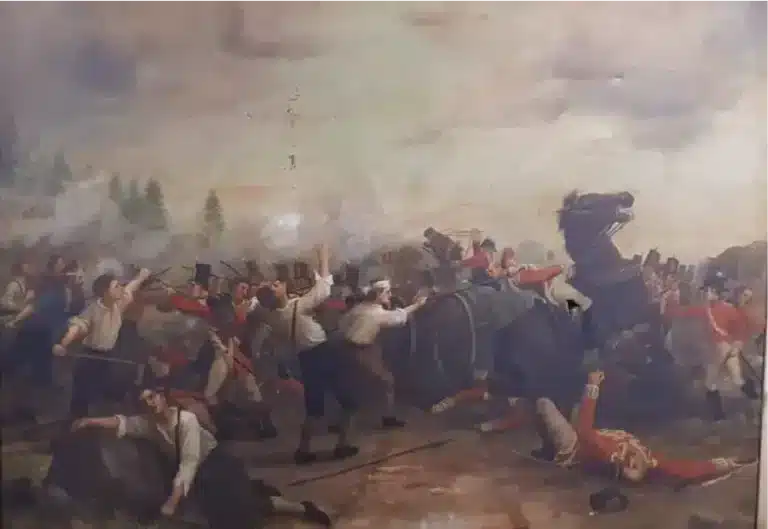
30 May 1798
The Battle of Three Rocks
After their success at Enniscorthy, the leadership of the Rebel forces argued over which town to attack next. Many opted to attack New Ross in the belief that a successful battle would result in United Irishmen in neighbouring counties joining the Rebellion. Others opted to attack a town in the north of the county for similar reasons.
Edward Fitzgerald and John Henry Colclough were released from prison to negotiate with the Rebels in Enniscorthy. Fitzgerald and Colclough brought news that many other senior figures were imprisoned in Wexford town and it was then decided that the onus should be on freeing these leaders. A decision was then reached to march on the garrison at Wexford town. Late in the afternoon a force of up to 10,000 Rebels left Vinegar Hill and set up camp at Forth Mountain before attacking Wexford Town.
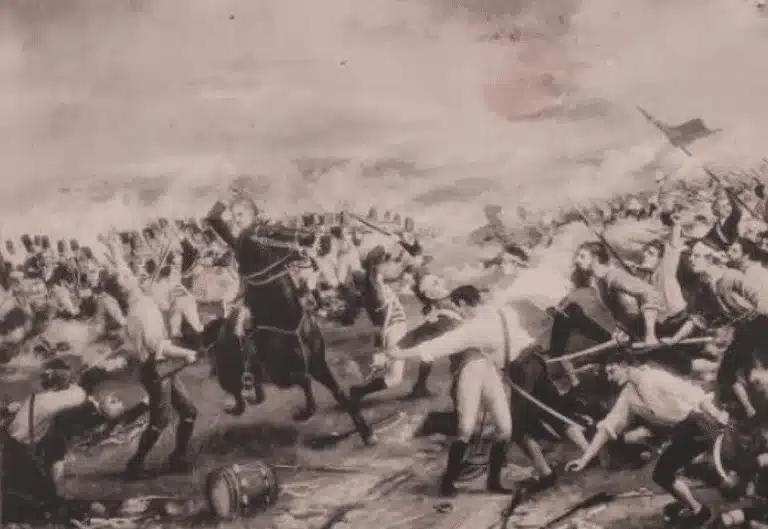
1 June 1798
The Battle of Newtownbarry
Four days earlier, a 5,000-strong Rebel force under the joint command of Myles Byrne and Fr. Mogue Kearns attacked the garrison town of Newtownbarry (now Bunclody). Positioning an artillery piece aimed at Yeomanry on the outskirts of the town, they forced all Crown Forces back into the town. Pikemen then drove the majority of the enemy across the bridge into Co.Carlow. However, British sharpshooters were still within the confines of Newtownbarry causing havoc amongst the Rebels. Upon hearing the gunfire, the main force of the Redcoats returned, inflicting 400 deaths on the Rebels and leading to their withdrawal.
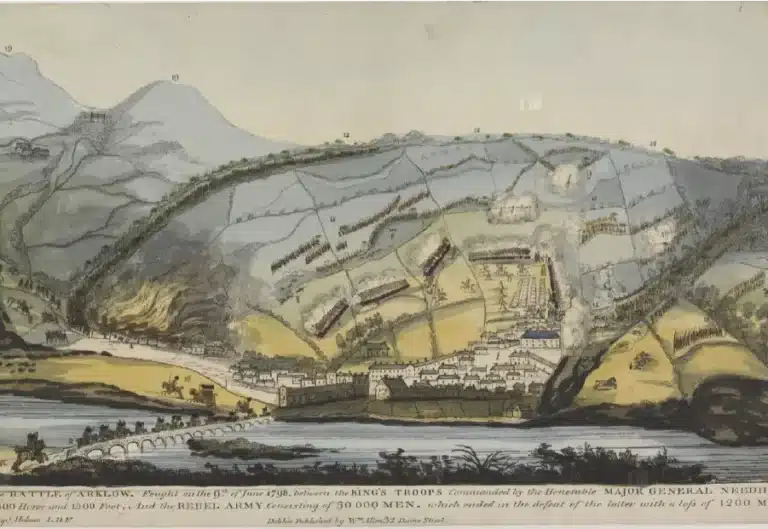
4 June 1798
The Battle of Arklow
A column of 400 Crown Forces consisting of Cavalry, Yeomanry and Militia led by Lt. Col. Walpole, were successfully ambushed as they traversed a narrow pass at Tubberneering, Co. Wexford, by Rebels of the North Division. Walpole himself was slain along with 100 of his troops. During this engagement, the Rebels captured 3 cannons and would soon utilize these at the Battle of Arklow.
On learning of the Rebels’ victory at Tubberneering, the forces of the Crown abandoned Gorey. The way was now clear for the United Irishmen to engage with the Crown Forces at Arklow and if successful, march on to Dublin.
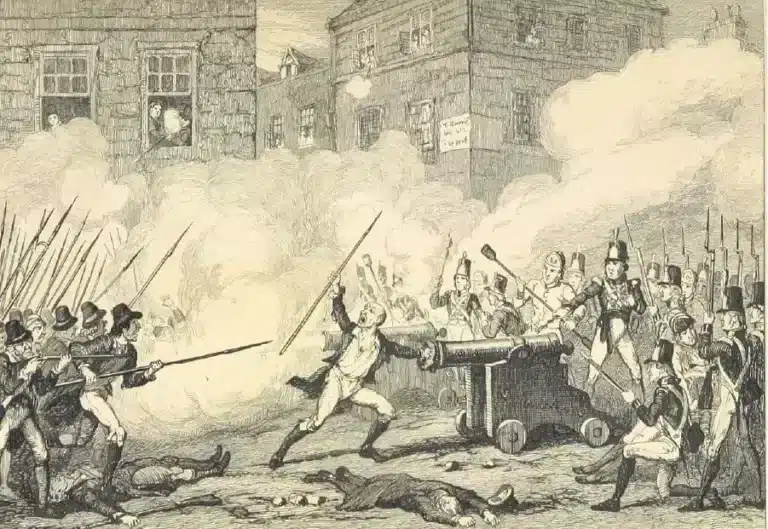
5 June 1798
The Battle of New Ross
At dawn on the 5th June, Crown Forces, expecting the Rebel assault, had prepared defenses in advance. They had a compliment of 2,000 soldiers under the command of General Johnson. Bagenal Harvey leading approximately 10,000 Rebels, divided his troops into three groups. Initial Rebel success occurred under John Kelly via his men succeeding in breaching Three Bullet Gate and seizing two-thirds of the town. However, in the early afternoon the Crown Forces rallied, and re-took all of New Ross. The remaining Rebels withdrew to the east, having sustained approximately 2,500 casualties. The Crown Forces lost approximately 250 personnel.
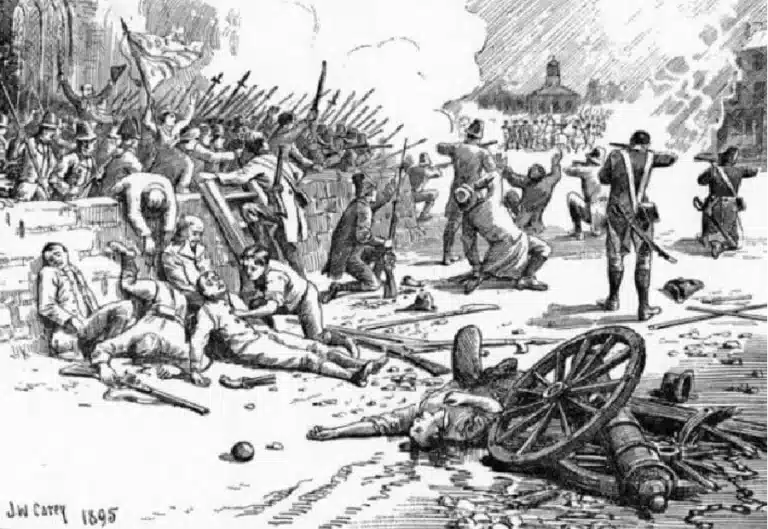
7 June 1798
Rebellion in Ulster
The Rebellion broke out in Antrim on 7 June. The Rebels, under the leadership of Henry Joy McCracken captured the towns of Ballymena and Randalstown. However, after these initial successes the Rebels suffered a heavy defeat when they attempted to seize Antrim town.
On 9 June, Rebels in County Down mobilised. They took the town of Saintfield and later they successfully captured Newtownards and Ballynahinch. The Rebels in County Down were eventually defeated at Ballynahinch.
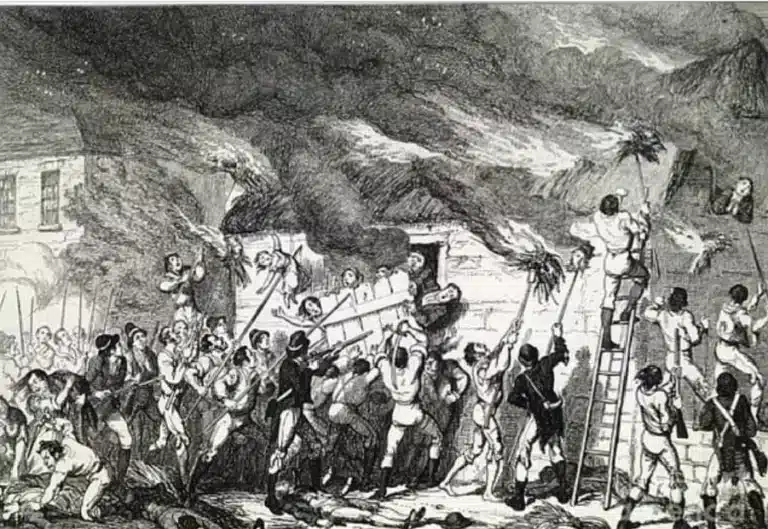
19 June 1798
The Battle of Foulksmills
Following the Rebels’ defeat at Arklow, the threat of the Rebellion spreading beyond the borders of County Wexford was greatly reduced. On 19 June, Sir. John Moore led his forces out of New Ross with the intention of linking up with the garrison at Duncannon. The plan to link up with the Duncannon garrison did not materialise and Moore’s troops headed for the village of Taghmon. Upon nearing Goff’s Bridge at Foulkesmill, Moore was informed that Rebel forces, under the leadership of Fr. Philip Roche, were heading towards them. Initially Moore’s troops were overwhelmed. However, they managed to hold their lines until reinforcements arrived. When reinforcements arrived, the Crown Forces overcame the threat posed by the Rebels.

21 June 1798
The Battle of Vinegar Hill
When the Rebellion was successfully defeated in Ulster, General Lake, Commander in Chief of the Crown Forces, turned his attention to ending the Rebellion in Wexford.
On 16 June, thousands of troops arrived in Dublin. This enabled General Lake to redeploy troops to Wexford. The Battle of Vinegar Hill took place on 21 June. General Lake ordered his forces to surround the Rebels on all sides of Vinegar Hill to prevent any escape. However, there was a flaw in General Lake’s plan. General Needham, who was instructed to position his troops on the southern slope of Vinegar Hill, had not arrived by the time the battle commenced.
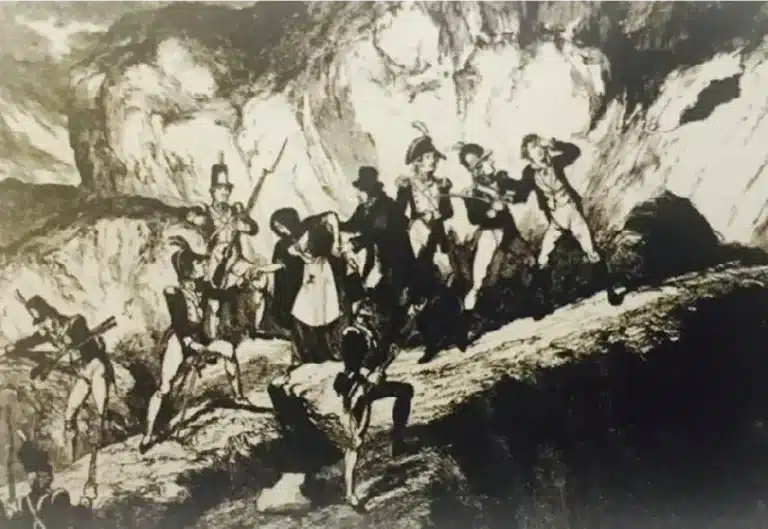
July-August 1798
The Aftermath
The Rebels managed an orderly retreat towards Wexford town. Civilians who had been taking refuge on Vinegar Hill were not so fortunate. It is estimated that 1,500 lives were lost during the Battle of Vinegar Hill. The majority of these were women and children who had been taking shelter in the Rebel camp.
After being defeated at Vinegar Hill the Rebels regrouped at Wexford Town. Some of their leaders went into hiding. Bagenal Harvey went to the Saltee Islands. Others such as Thomas Cloney and Edward Hay attempted to negotiate a surrender.
When General Lake offered no terms of surrender, Rebel leaders Anthony Perry, Miles Byrne, Father John Murphy and Edward Roche, left Wexford. Meanwhile, General Lake and his forces were rounding up and executing suspected Rebel leaders.
April 1798

A decision was made to commence the Rebellion in Dublin in April 1798. However, in March 1798 the rebellion plans suffered a setback. On 12 March 1798, leading members of the Leinster Directory of the Society of United Irishmen were arrested in Dublin. The home of Oliver Bond was raided by Crown Forces while a meeting was in progress.
It was on this date that sixteen leading members of the Society of United Irishmen were arrested across Dublin.
The Rebellion was then postponed until late May. The United Irishmen’s plan was to seize Dublin on 23 May. Simultaneously, United Irishmen in the counties of Meath, Kildare, Wicklow and Carlow were to engage the Crown Forces in their given county to prevent military reinforcements from entering Dublin. Finally, it was expected that other counties across Ireland would join the Rebellion.
In Dublin, the United Irishmen planned to occupy key public buildings such as Dublin Castle. Mail coaches would be stopped as a signal to the United Irishmen in other counties that the rebellion had commenced. The intelligence available to the Crown Forces enabled them to intercept the United Irishmen. As a result, the Rebellion in Dublin was a failure.
The Crown Forces mobilised 4,000 troops and took possession of key points in the city. Clashes took place between the United Irishmen and Crown Forces at Clontarf, Santry, the North Strand, Ringsend and Donnybrook, with the United Irishmen defeated at each location. Uprisings in counties surrounding Dublin were also unsuccessful.
In County Kildare, the Rebels took the town of Prosperous and the village of Kilcullen before suffering defeats at the hands of the Crown Forces at Nass and Clane. In County Wicklow, the Rebels attempted unsuccessfully to capture the towns of Dunlavin and Baltinglass. In County Meath, the Rebels lost several hundred men when their camp at Tara Hill was attacked.
26 May 1798

27 May 1798

28 May 1798

In order to break into the town, Rebel commanders decided to stampede cattle into the ranks of defenders. The Infantry were sent into disarray and the Rebels pressed their advantage by sending a full pike charge at the retreating soldiers. Following several hours of intense fighting, the Rebels succeeded in capturing Enniscorthy Town. They then set up their main camp on Vinegar Hill.
News of their success filtered across the parishes in the surrounding countryside. Over the course of the next 24 hours, Rebel leaders from the local parishes gathered their forces and made their way to the encampment on Vinegar Hill, considerably bolstering the rebel numbers. The permanent camp on Vinegar Hill also acted as a place of refuge from attacks by the Crown Forces for family members of the Rebels or other non-combatants who sympathised with the Rebels’ cause.
30 May 1798

While encamped on Forth Mountain, the Rebel forces learnt of a column of Meath Militia traveling to bolster the garrison defending Wexford town. After quick deliberations, Rebels from the Barony of Bantry sprang an ambush on these re-enforcements and annihilated the column at the Battle of Three Rocks. After hearing of the ambush, the 1,200 strong garrison of Crown Forces under Colonel Maxwell abandoned Wexford town for Duncannon. Now almost all of County Wexford was in control of the Rebels.
Following deliberations, it was decided to divide their forces into two attacking groups, commonly referred to as the North Division and the South Division. The latter, under the leadership of Bagenal Harvey marched west to attack the town of New Ross. The former would split in two, with a detachment led by Myles Byrne to attack the town of
Newtownbarry and a larger force under the leadership of Anthony Perry to attack the towns of Gorey and Arklow.
1 June 1798

4 June 1798

On 9 June, Rebel forces commanded by Fr. Michael Murphy, Anthony Perry, Edward Roche and Billy Byrne commenced their assault on Arklow, Co. Wicklow. They opened with cannon fire from various strategic points around the outskirts of the town. Crown Forces under the authority of General Needham, numbering 1,700, returned artillery fire from the fortified barricades they had constructed at all the main entry points to the town. The Rebel forces numbering approximately 10,000 and divided into separate contingents, bravely moved towards them. However, they were pushed back at all locations. Although a British cavalry charge was repulsed back across the Avoca River by the Rebels, they were defeated and forced to withdraw at nightfall under cover of darkness. They were unaware that Crown Forces throughout the town were almost out of ammunition.
Fr. Michael Murphy lost his life during the battle, along with almost 500 of his men. The Crown Forces lost approximately 100 men. With the loss at Arklow and combined losses at New Ross and Newtownbarry, everything was now about to change for the United Irishmen.
5 June 1798

7 June 1798

19 June 1798

21 June 1798

On the morning of 21 June, there were approximately 10,000 Crown Forces in position. The Crown Forces were well armed with cannons and muskets, in comparison to the Rebels who had meagre weapons such as pikes. The Rebels’ position ahead of the battle was further weakened by the absence of Edward Roche and re-enforcements from Wexford town, who had yet to arrive. Furthermore, in the weeks leading up to the Battle of Vinegar Hill, the Rebels had made no attempt to make the hill a formidable defensive position. Miles Byrne, one of the youngest rebel leaders who fought at Vinegar Hill, gives the following account:
‘I had not seen Vinegar Hill since the morning after the Battle of Newtownbarry, the 2nd of June, and I was surprised to find that scarcely anything had been done to make it formidable against the enemy. The vast fences and ditches which surrounded it on three sides, and which should have been leveled to the ground, for at least a cannon shot, or half a mile’s distance, were all left untouched.’
On June 21 at 3 am, the battle commenced. General Johnson commenced artillery bombardment on the Rebel positions on the outskirts of Enniscorthy town, while General Lake commenced artillery bombardment of the Rebel positions on Vinegar Hill. Following intense artillery bombardment Rebel leaders positioned on the outskirts of the town retreated towards the Duffry Gate.
At 7 am, Lake’s forces commenced infantry assault on the Rebels on Vinegar Hill. By this time the Rebels in the town were engaged in intense house to house fighting with General Johnson’s troops. The Rebels based in the town pulled back over Enniscorthy Bridge and a stalemate ensued. During the stalemate the Rebels and Crown Forces inflicted heavy casualties upon each other.
By 9 am, the Rebel leaders believed that their defense of Vinegar Hill was futile without reinforcements from Wexford town. They made the decision to retreat towards Wexford town. This retreat was only possible because General Needham who was meant to be positioned on the southern slope, was late for the battle. As the Rebels retreated towards Wexford they encountered General Needham and his troops. Needham pursued the Rebels and had it not been for the arrival of reenforcements from Wexford town, under the leadership of Edward Roche, the retreating Rebels would have suffered significant casualties. Roche’s forces engaged with Needham and his troops, until Needham gave up his pursuit of the retreating Rebels.
July-August 1798

Rebels led by Fr. John Murphy and Myles Byrne headed for Killedmond, Carlow where they defeated government forces. They were also victorious at Goresbridge and Castlecomer.
On 26 June, Fr John Murphy and a companion became separated from the main body of Rebels, which under Miles Byrne fought its way back to Wexford.
At Wexford most of them dispersed, but Byrne and a few hundred supporters headed to Wicklow. Father Murphy and his bodyguard James Gallagher were captured and sentenced to death in Tullow, Co. Carlow.
Rebel forces, under the leadership of Edward Roche and Anthony Perry, unsuccessfully attacked Hacketstown, but were victorious at Ballyellis. They then set out for Carnew, failing to capture the town. They were joined by Miles Byrne and the remnant of the Fr Murphy Column. They headed for County Wicklow, marched North to Blessington, into Kildare and onto Meath and then south again to Dublin, fighting skirmishes along the way. Their intention to link up with Rebel forces from Ulster did not materialise. The last major clash was at Ballyboghill, in North Dublin, where the Rebels were defeated by General Gordon’s forces.
History of the 1798 Rebellion
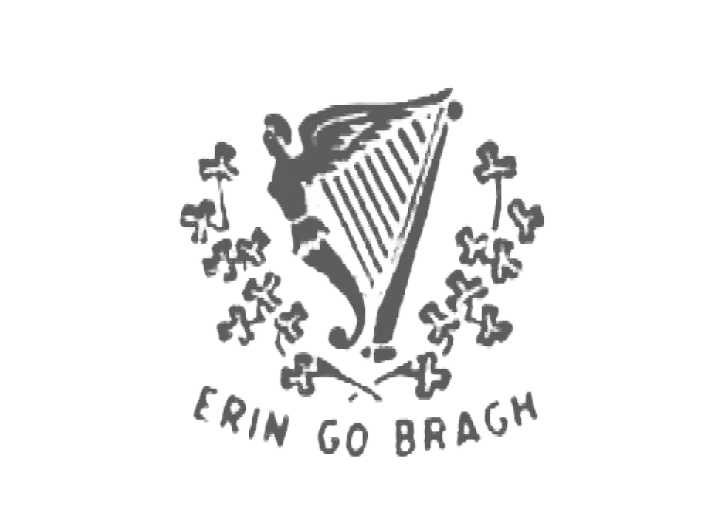
Experience the Rebellion
Come face-to-face with the key figures of the Rebellion, immerse yourself in the bloody Battle of Vinegar Hill, discover the power of weapons from the period and learn, in gruesome detail, how some 20,000 insurgents faced the might of 10,000 well-trained and well-armed Crown Forces.
